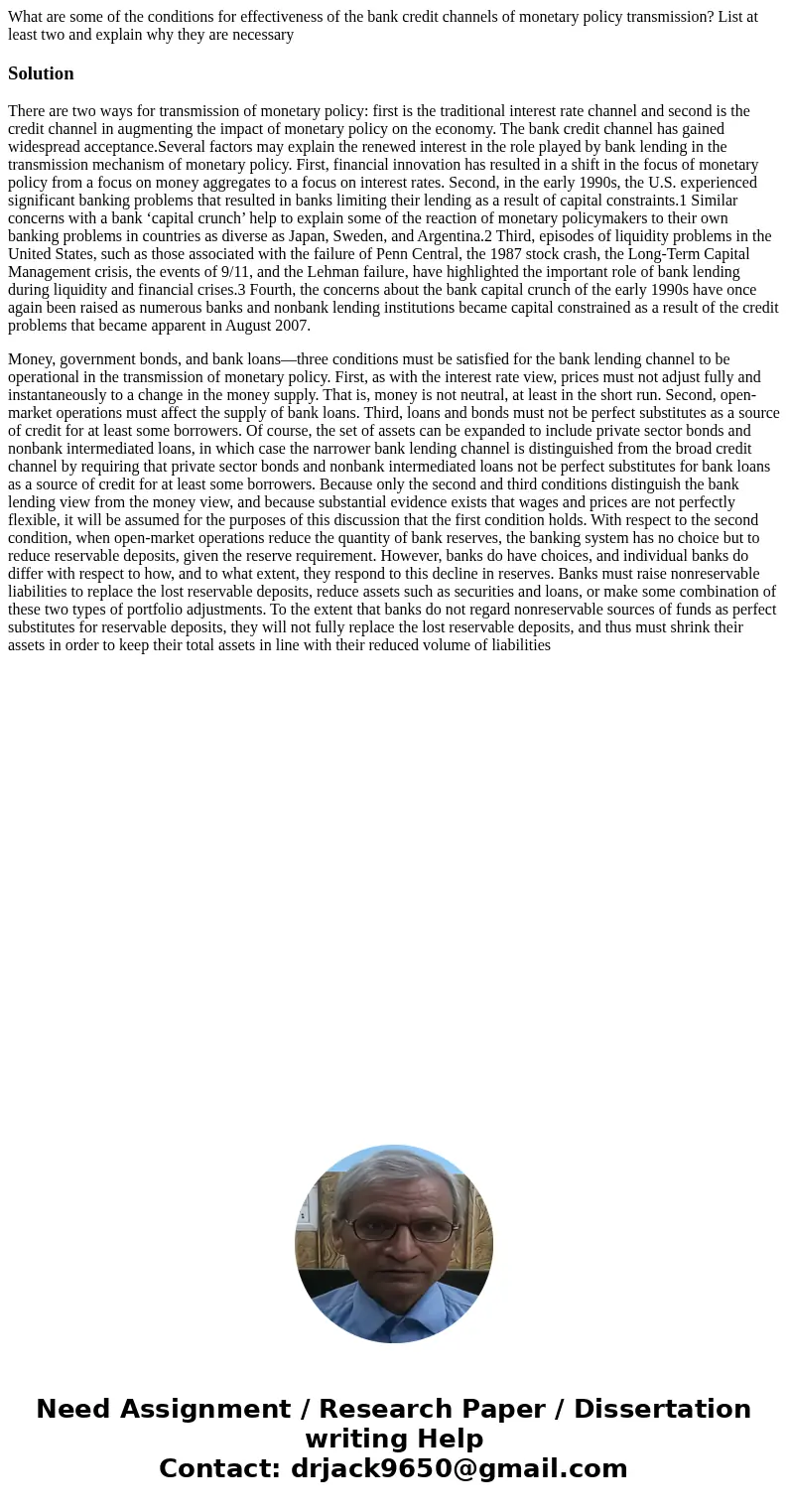What are some of the conditions for effectiveness of the ban
What are some of the conditions for effectiveness of the bank credit channels of monetary policy transmission? List at least two and explain why they are necessary
Solution
There are two ways for transmission of monetary policy: first is the traditional interest rate channel and second is the credit channel in augmenting the impact of monetary policy on the economy. The bank credit channel has gained widespread acceptance.Several factors may explain the renewed interest in the role played by bank lending in the transmission mechanism of monetary policy. First, financial innovation has resulted in a shift in the focus of monetary policy from a focus on money aggregates to a focus on interest rates. Second, in the early 1990s, the U.S. experienced significant banking problems that resulted in banks limiting their lending as a result of capital constraints.1 Similar concerns with a bank ‘capital crunch’ help to explain some of the reaction of monetary policymakers to their own banking problems in countries as diverse as Japan, Sweden, and Argentina.2 Third, episodes of liquidity problems in the United States, such as those associated with the failure of Penn Central, the 1987 stock crash, the Long-Term Capital Management crisis, the events of 9/11, and the Lehman failure, have highlighted the important role of bank lending during liquidity and financial crises.3 Fourth, the concerns about the bank capital crunch of the early 1990s have once again been raised as numerous banks and nonbank lending institutions became capital constrained as a result of the credit problems that became apparent in August 2007.
Money, government bonds, and bank loans—three conditions must be satisfied for the bank lending channel to be operational in the transmission of monetary policy. First, as with the interest rate view, prices must not adjust fully and instantaneously to a change in the money supply. That is, money is not neutral, at least in the short run. Second, open-market operations must affect the supply of bank loans. Third, loans and bonds must not be perfect substitutes as a source of credit for at least some borrowers. Of course, the set of assets can be expanded to include private sector bonds and nonbank intermediated loans, in which case the narrower bank lending channel is distinguished from the broad credit channel by requiring that private sector bonds and nonbank intermediated loans not be perfect substitutes for bank loans as a source of credit for at least some borrowers. Because only the second and third conditions distinguish the bank lending view from the money view, and because substantial evidence exists that wages and prices are not perfectly flexible, it will be assumed for the purposes of this discussion that the first condition holds. With respect to the second condition, when open-market operations reduce the quantity of bank reserves, the banking system has no choice but to reduce reservable deposits, given the reserve requirement. However, banks do have choices, and individual banks do differ with respect to how, and to what extent, they respond to this decline in reserves. Banks must raise nonreservable liabilities to replace the lost reservable deposits, reduce assets such as securities and loans, or make some combination of these two types of portfolio adjustments. To the extent that banks do not regard nonreservable sources of funds as perfect substitutes for reservable deposits, they will not fully replace the lost reservable deposits, and thus must shrink their assets in order to keep their total assets in line with their reduced volume of liabilities

 Homework Sourse
Homework Sourse